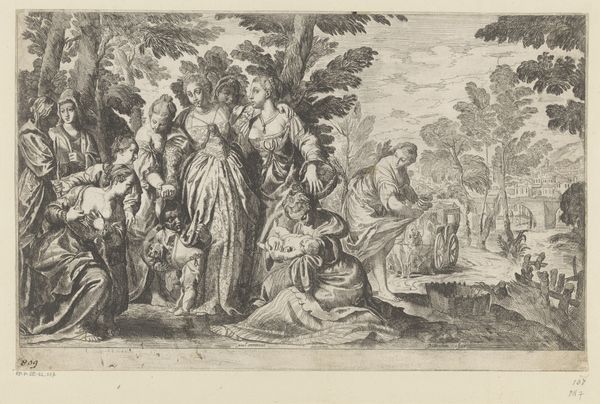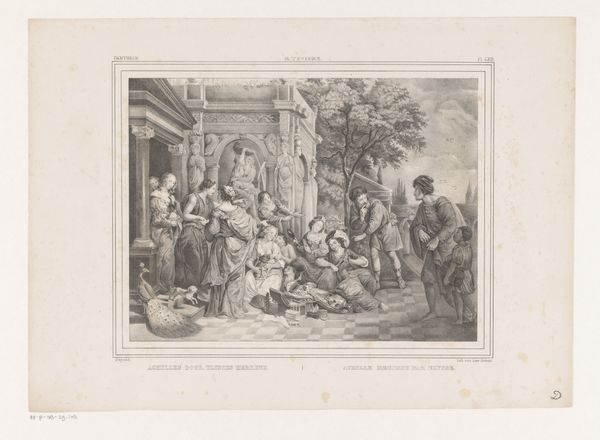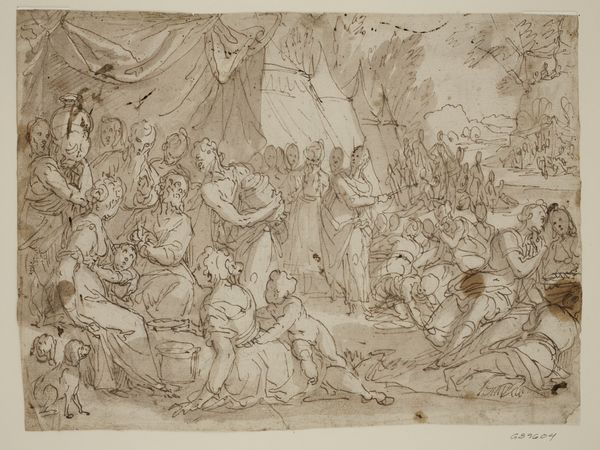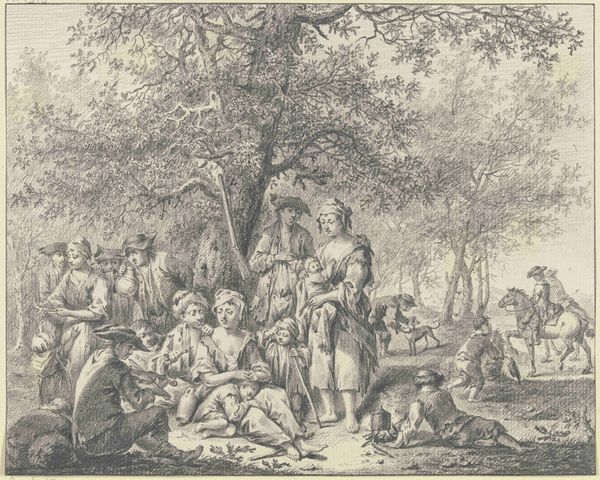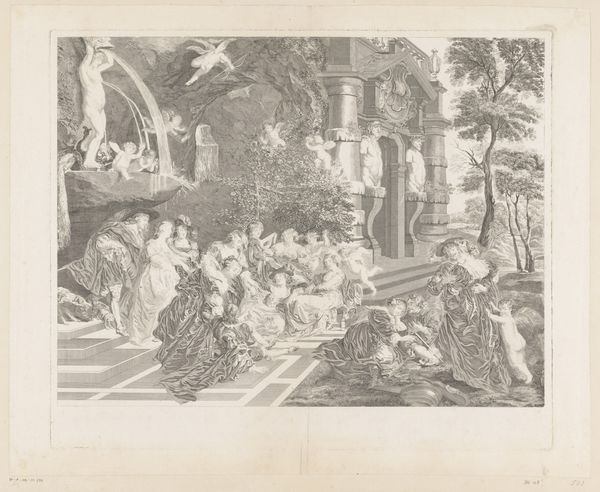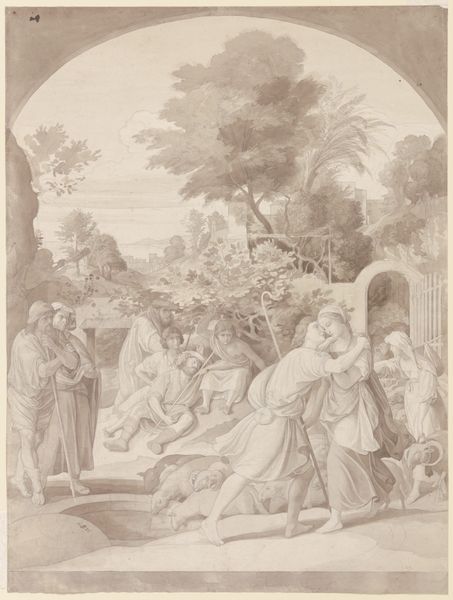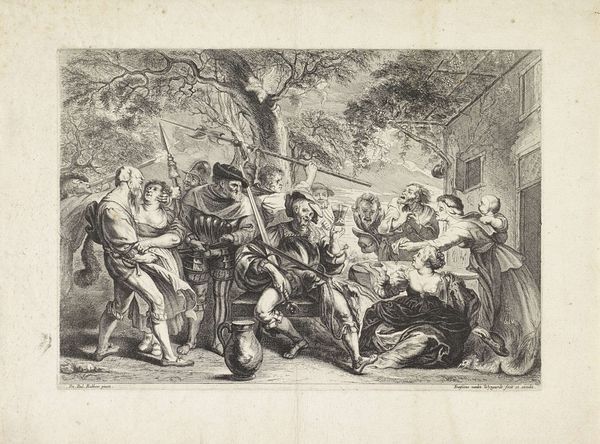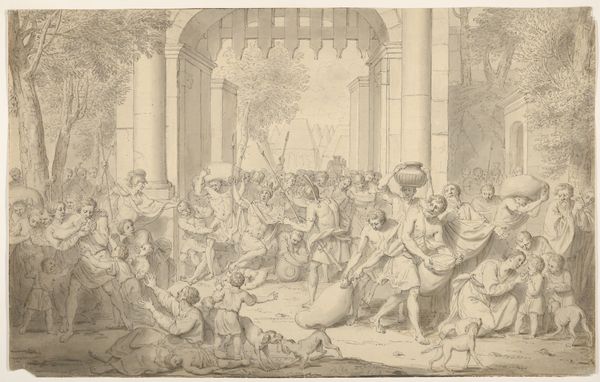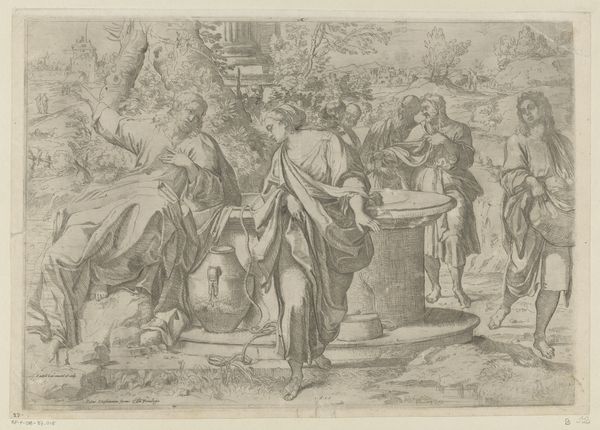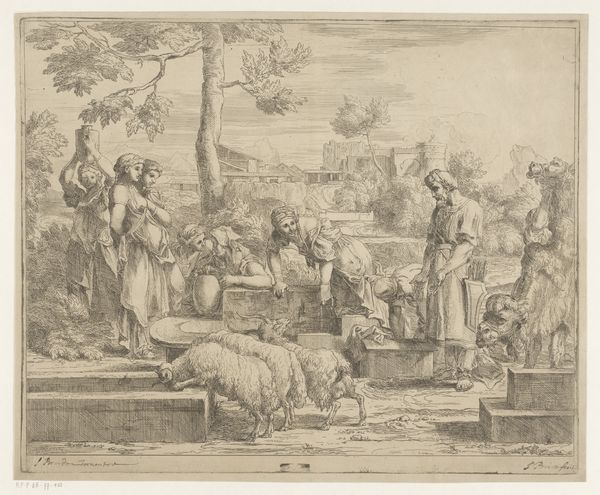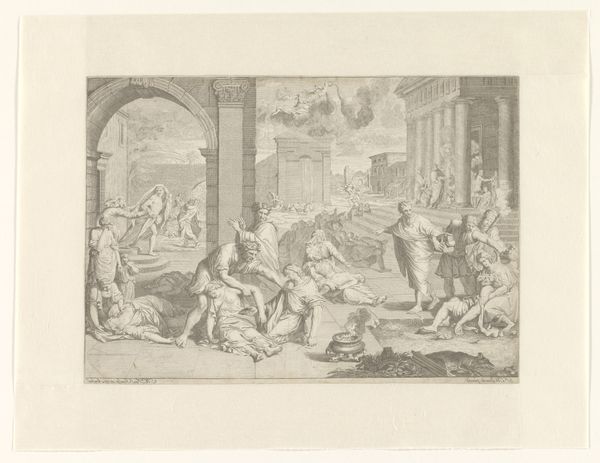
drawing, ink
#
drawing
#
figuration
#
ink
#
group-portraits
#
romanticism
#
orientalism
#
genre-painting
Copyright: Public Domain
Editor: Here we have "Boy Dancing Before a Gathering of Orientals," an 1833 ink drawing by Johann Michael Wittmer, currently housed in the Städel Museum. There’s a striking contrast between the active dancer in the center and the lounging figures around him. How do you interpret this work, especially considering its title? Curator: That contrast you’ve observed is crucial. Wittmer was working within a Romantic Orientalist framework, a common European fascination at the time. The "gathering of Orientals," as the title bluntly puts it, represents a Western gaze upon an imagined, exoticized East. The dancer, in particular, becomes a spectacle, reinforcing power dynamics between the observer and the observed. What do you make of the details in their clothing and surroundings? Editor: Well, there are turbans, loose robes, what looks like a hookah… They seem to confirm those orientalist stereotypes. But what about the everyday life elements, like the women and children? Does that complicate the picture? Curator: Absolutely. The presence of women and children suggests a glimpse into domestic life, yet even that is filtered through a European lens. This piece isn't merely a depiction; it’s a statement about how Europe constructed its understanding of other cultures, often through skewed or incomplete portrayals. Do you notice how the composition leads our eye? Editor: Yes, it definitely centres on the boy. Everyone else is kind of arranged around him like props. It really puts him – and perhaps the viewer looking at him – in the spotlight. Curator: Exactly. It speaks to how "otherness" was packaged and consumed for a European audience. Thinking critically, how does this historical context impact our appreciation or understanding of the artwork today? Editor: I see how essential it is to consider this drawing not just for its artistic merit, but also for the problematic history it represents and the ongoing implications for how we perceive different cultures. Curator: Precisely. By engaging with this historical context, we can critically analyze not just the art, but also ourselves, and how we perpetuate or challenge these inherited biases.
Comments
No comments
Be the first to comment and join the conversation on the ultimate creative platform.


